Nanduri village in the Dharani sub-division lies nestledamong the hills and thick forests of Amravati district in Maharashtra. 290 families that belong to various Adivasi and backward communities such as Lohar, Golan, Balaai, Korku, Gond live here – the total population being around 1200. These villagers are dependent on daily wage labour, and on cultivating their two- or three-acre parcels of ancestral land. Before 2001, the farmers who relied mainly on rivers, wells and rainwater for irrigation were able to grow a kharif (monsoon) crop, while those with better access to water were able to produce a rabi (winter) crop as well. However, most farmers faced a lack of water and tended to migrate in search of livelihood.
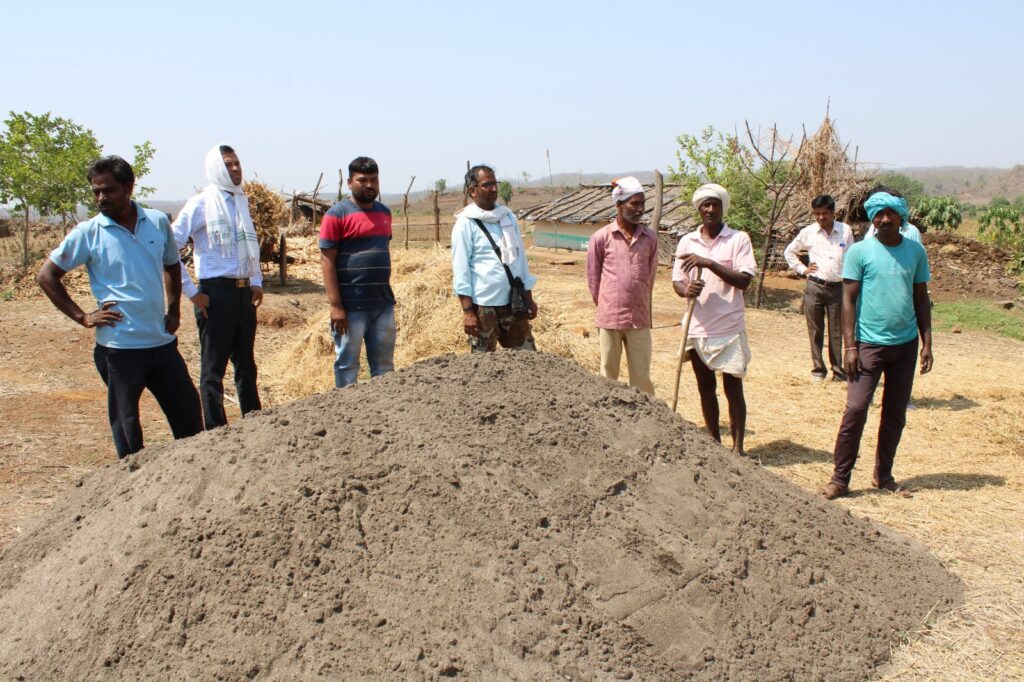
The farmers & the SPS PIM team survey the canal site
It was due to such problems that a survey was carried out here at one point, by the Minor Irrigation Division of the government’s Department of Water Management, which found that it was possible to construct an earthen dam in the area that would help irrigate roughly 700 acres.
Construction work began on the dam in 2002, with canals being made to divert water from the dam to the fields for irrigation. The work provided employment to some 250 villagers, and took four years to be completed. With their newfound access to an adequate water supply, local farmers began to grow not only the two main, kharif and rabi crops, but also a third, zaid (summer) crop in the in-between season. Thus, villagers were now able to stay back and survive through farming rather than being forced to migrate.
Over time, however, the irrigation canals developed seepage issues, creating new difficulties for the farmers. The fields closer to the dam still received sufficient water, but not fields lying further away. Besides, the leaking water turned the land muddy and wet, and this water-logging damaged crops in some fields. The farmers made a number of submissions to the Irrigation Division, reporting the problems, but no response was forthcoming.
One of the 260 activities listed under the government’s MGNREGA scheme (Mahatma Gandhi National Rural Employment Guarantee Act) is Participatory Irrigation Management (PIM), the aim of which is to ensure better irrigation management and equal water distribution through farmers’ participation, while attempting to provide more and more farms with water for an overall increase in productivity. Although the government and its officials appear to have abandoned this particular mission, Samaj Pragati Sahayog (SPS) has been working to make Participatory Irrigation Management a reality in the Dharani sub-division.
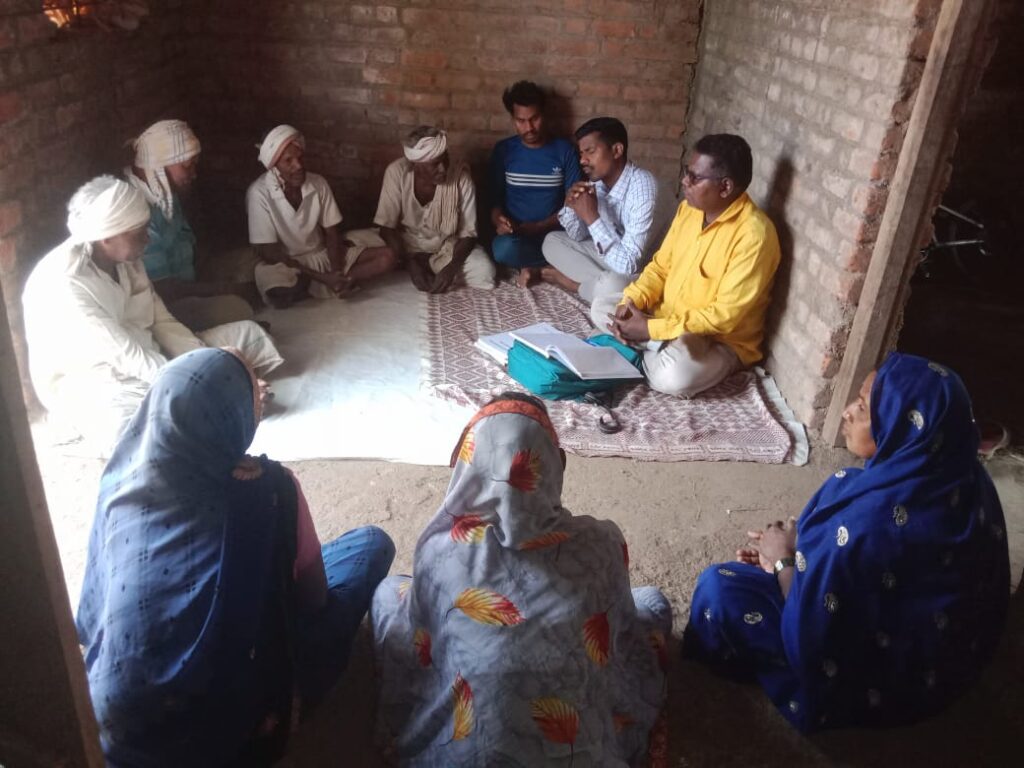
Meeting in the Birsa Munda Water Collective
SPS’s Participatory Irrigation Management approach aims mainly to inspire farmers to put their irrigation systems in order, which necessitates having close conversations with them. It was in the course of one such conversation with the farmers of Nanduri village that the SPS PIM team learned about the water seepage problem. Accompanied by the farmers, SPS team members Dharmendra Gahlod, Devendra Rajoria, Narendra Jawarkar and Raju Jawarkar examined the seepage, after which three water users’ associations were formed from among the beneficiary users in the command area of the irrigation project, to encourage them to hold talks among themselves and together find solutions to irrigation issues. At the meetings of the Birsa Munda Water Collective, Om Ganesh Water Collective and Jai Mahakali Water Collective, which were initially moderated by the SPS PIM team, members discussed the problems they faced on a regular basis because of the seepage, and how their multiple appeals to government departments had been steadily ignored.
In view of this situation, the villagers concluded that it was futile to rely on government assistance, and they would have to act on their own. They determined that their only option was to repair the canals. Based on the extent of flow and the types of soil, the PIM team suggested that the existing earthen canals be replaced with more durable cement or concrete canals. This would end the water-logging as well. The farmers were worried about expenses, but the PIM team assured them of aid from the organisation – "you need only provide land at the edge of your fields for laying the canals", the team said, "and make some contribution to the costs".
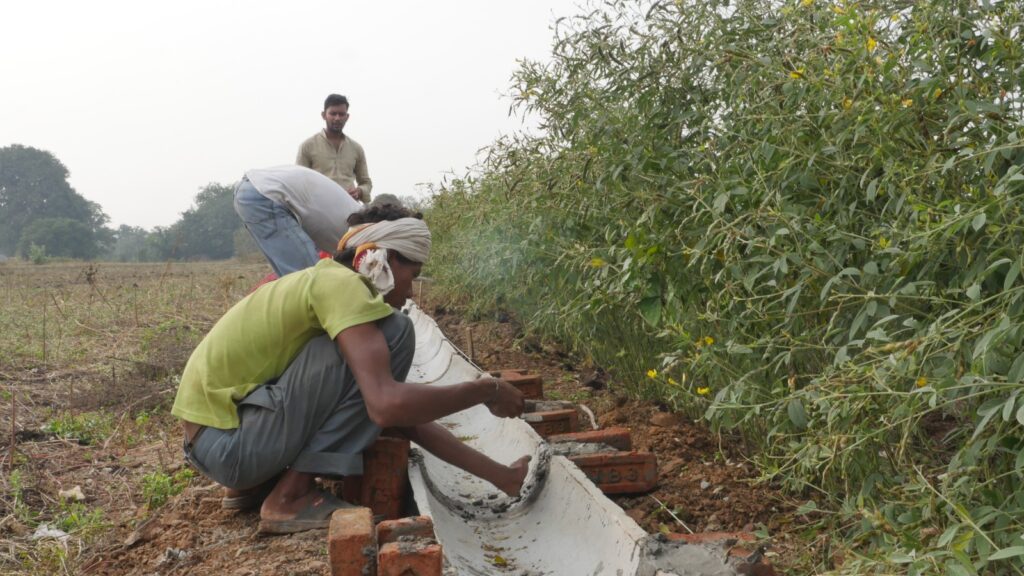
Installing half round concrete pipes
Several farmers were still anxious, wondering whether they stood to lose both land and money in case the whole plan failed. Consequently, the PIM team took 10 women and 20 men from the water collectives in Nanduri on an exposure visit to the organisation’s work sites in Madhya Pradesh (MP), where a similar PIM approach has successfully brought about improvements in agriculture. The farmers from Maharashtra saw for themselves how the farmers in MP were using cement channels, with four to six-inch pipes placed at intervals to regulate water use and deliver water to their fields. Once a field was irrigated, they would plug the flow with pieces of cloth so that other farmers received their fair share of water. The Nanduri farmers took heart from all they witnessed.
On their return, everyone agreed to constructing cement canals. It struck them, however, that most of their fields had black soil, which meant the cement canals would not last long. When people walked on their concrete edges, the clayey black soil, due to its high water-retaining capacity, would sink and make the canals crumble. It was then decided that rather than construct canals, it would be better to use pre-fabricated cylindrical pipes. And wherever they needed to lay half-round pipes, they would bolster these pipes with a cement mix so that they remained sturdy.
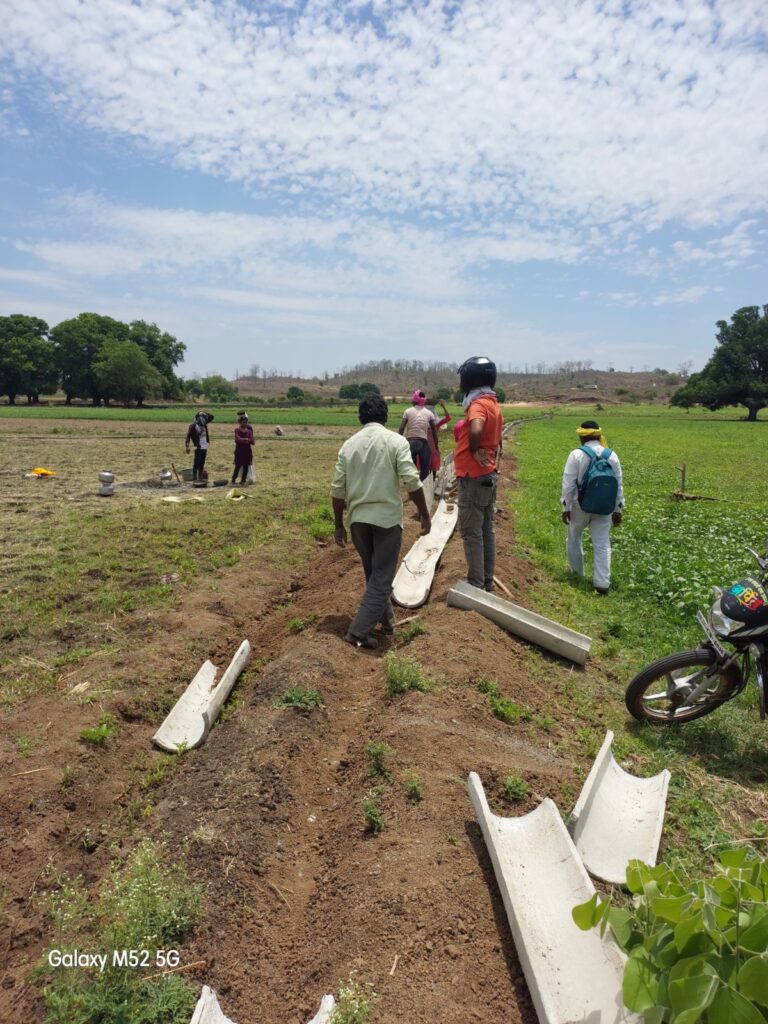
Installing pipes on the canal
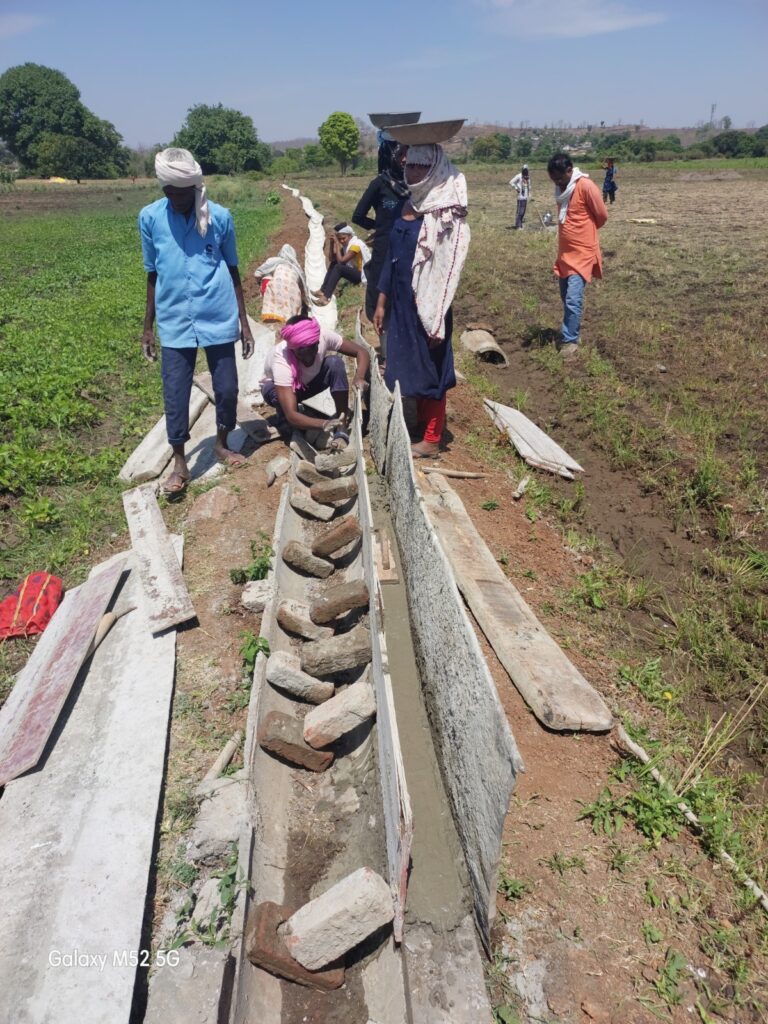
farmers opted to contribute labour in lieu of cash
The work began with the Birsa Munda Water Collective, on the fields of 12 farmers. A quotation obtained from a pipe seller put the expenses at Rs 8,00,000-9,00,000, which included 50 full-round and 200 half-round pipes, as well as mason’s fees and labour charges. The farmers opted to contribute labour in lieu of cash.
Some SPS workers and members from the collectives went to Chandur Bazaar to select and order the pipes. Work began in May 2023, but had to be paused during the monsoon months, when sundry agricultural tasks occupied the farmers. Moreover, several festivals were celebrated in this period, and so it took a whole year to complete the irrigation project.
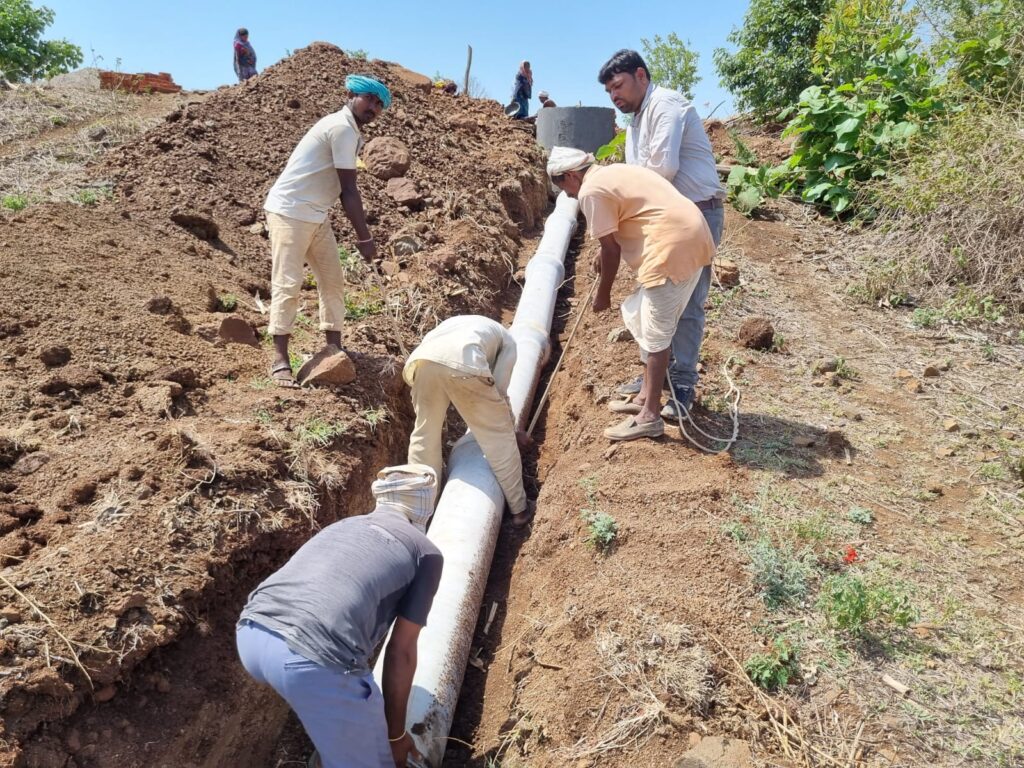
Installing pipes
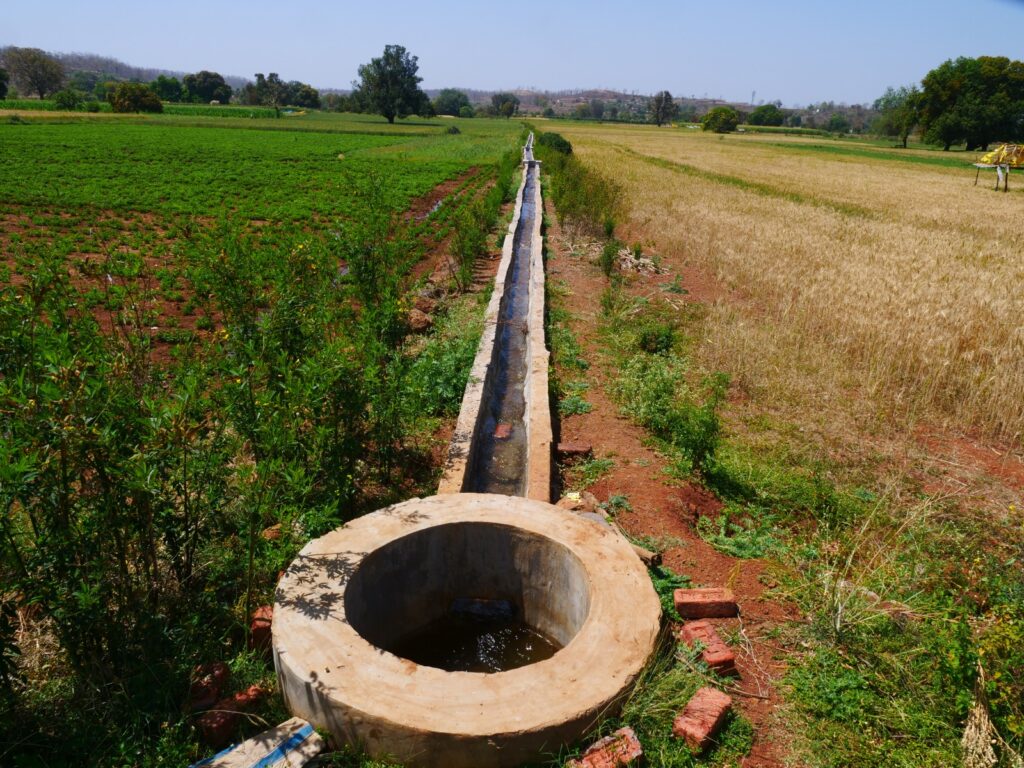
Cement canal is ready
In April 2024, the collaboration between SPS and the farmers bore fruit, with expenses coming to Rs 8,50,000 – of which the organisation gave Rs 8,00,000 while the farmers contributed labour worth Rs 50,000. The fields of 12 farmers were freed of water-logging, and having water in plenty led to higher crop yields. The farmers expressed their gratitude to SPS and its dedicated team. Some farmers are still facing irrigation losses due to seepage, while others are still dealing with the problems caused by muddy water-logged land. SPS is trying to link its PIM programme with the government’s MGNREGA scheme, so that it may benefit all farmers.
Writing: Shaikh Sajid
Source: Raju Jawarkar
Photography: Raju Jawarkar, Gajanan Moghe
